Temple Architecture, The Most Remarkable Old Hindu Tradition
Hindu Temple Architecture is the mirror of Indian culture and artistic skills. Read the minutes of construction arts from ancient times by Hinduism.
Introduction :
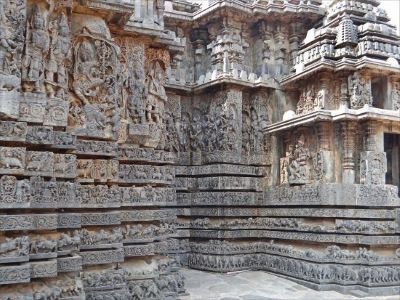
Hindu temple architecture is indeed India’s rich cultural heritage. The temples are primarily places for religious activities. At the same time, they represent the cultural and social life of Hindu communities.
Social gatherings:
Mandirs are also the place for social meetings. These are the educational institutions as well since the past times. Interestingly, the architectural evolution of these temples spans centuries, with each era contributing unique styles. In addition, innovations were adhering to traditional principles.
Vastu Shastra:
One of the key elements of Hindu temple architecture is the Vastu Shastra. The Vastu Shastra especially states that any defined structure is a micro edition of the universe. The temple is a sacred place where the sanctum holds the core importance. In other words, the sanctum is the focal point of the universe.
A towering spire or Shikhara typically surmounts the sanctum in the North Indian style. It is Vimana in the South Indian style. Further, it is the symbol of the mythical Mount Meru of Hinduism.
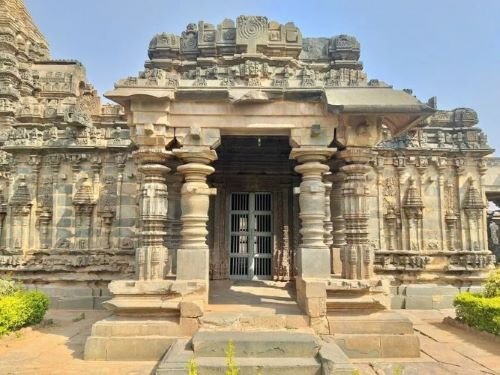
Prominent architectural styles:
There are in fact, two prominent styles of Hindu temple architecture. These are the Nagara style prevalent in North India and the Dravidian style in South India, to be precise. The Nagara style temples have cluster of towers. Specifically, there is a series of progressively smaller towers.
At the same time, the Dravidian style features pyramid-shaped towers, extensive pillared halls, and elaborate gateway towers known as Gopurams. Each style, of course, distinguishes specific architectural elements and ornamental details that reflect regional variations and historical influences.
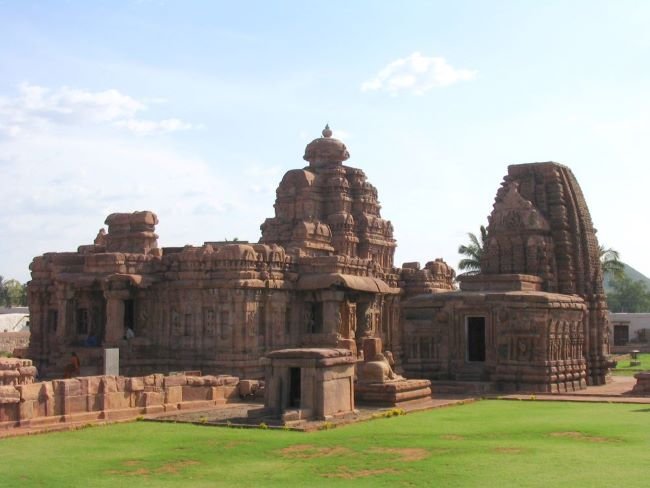
Cultural activities:
The holy places therefore hold cultural importance. They are thus the sites of significant festivals, rituals, and ceremonies. It certainly brings communities together and preserves ancient traditions. Temples also serve as repositories of arts including dance, sculpture, painting, classical music, etc.
The evolution of Hindu temples in history markedly points to a vivid diversity of its cultural heritage. The journey commences with the cave temples, the earliest examples of Hindu temple architecture.
Gupta period and other dynasties:
During the Gupta era, i.e. in the 4th to 6th centuries CE, these mandirs were carved directly into rock faces. The Gupta period witnessed the initial experiments with temple design. It of course, characterized simple, yet elegant, structural forms. The rock-cut temples of Udayagiri and the Dashavatara Temple at Deogarh are prime icons of this era.
Chola dynasty:
As we move forward, the Chola dynasty (9th to 13th century CE) emerges as a significant contributor. As a result, the temple architecture came up with new concepts and designs. The Cholas gloriously contributed to its construction. Further, they erected intricately detailed temples. It reflected their immense devotion and artistic prowess.
The Brihadeeswara Temple in Thanjavur, also known as the Big Temple, proves Chola’s architectural brilliance. This period saw the emergence of the Dravidian style. The style characterize with towering vimanas (temple towers), expansive courtyards, and elaborate sculptures. It specifically depicted various deities and mythological narratives on its walls.
The Vijayanagara Empire ( 14th to 17th century CE) further enriched the architectural landscape with its unique contributions. It artfully combined the Dravidian style with elegant Indo-Islamic depictions. This resulted in a distinctive aesthetic that is both grand and harmonious.
The Virupaksha Temple in Hampi is a grand example of this era. It designed ornate pillared halls, intricate carvings, and monumental gopurams or gateway towers. This period also saw the increased use of mandapas which means the pillared halls. Importantly, it included intricate friezes and bas-reliefs during this period.
Key Elements:
Each of these periods has left an impressive mark on the evolution of Hindu temple architecture. It started with the initial cave temples of the Gupta era. Then to the opulent edifices of the Chola dynasty and the architectural marvels of the Vijayanagara Empire. The historical evolution of Hindu Temples is a fascinating journey through time, reflecting the dynamic mixture of culture, religion, and artistic expression.
Hindu temple architecture undoubtedly expresses spirituality, culture, and artistic skills. Garbhagriha is of prime importance in any Hindu mandir. It is often small and dark but decorated to create a meditative atmosphere. The Garbhagriha symbolizes the womb of creation, meanwhile.
Above all, it serves as the spiritual core of the temple, where devotees can connect with the divine power. The chief deity of that particular mandir resides in Garbhagriha.

A place for people’s congregation is always adjoining to the Garbhagriha. It is therefore, the Mandapa, which is a space with a series of pillars.
Mandapa and Shikhara or Vimana:
The Mandapa has usually intricate designs, often featuring elaborate carvings and sculptures that depict scenes from mythological stories and epics. This hall is not only a place for worship. Mandapa also hosts community gatherings, music, and dance performances. Thus, it truly reflects this Hindu structure’s role as a social and cultural hub.
The Shikhara or spire, is another prominent feature in Hindu temple architecture. It is the towering structure above the Garbhagriha. Architecturally, it is the highest element to easily identify from a remote spot.
The Shikhara have as much as possible adorations with ornate carvings and sculptures, symbolizing the mythical Mount Meru. The Hindu ideology indeed believes that Mount Meru is the central focus of the universe. Moreover, this vertical element guides the devotee’s gaze upwards, creating a sense of spiritual elevation.
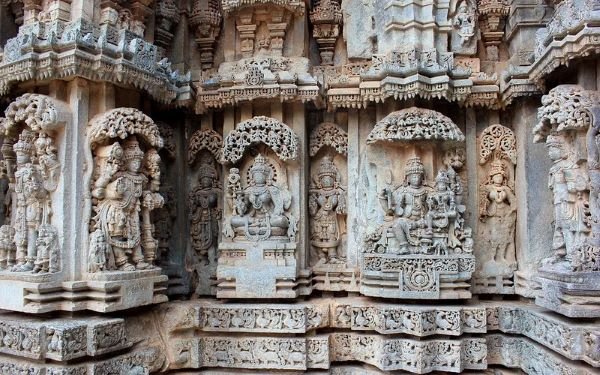
In South Indian Temples, the Vimana is a similar although a distinct architectural element. This tower-like structure rises above the sanctum and is typically more pyramidal in shape than the Shikhara. The Vimana remains filled with beautiful patterns of celestial powers, idols of deities, and geometrical figures. More significantly, it professes a journey from the earthly realm to the divine.
Each Garbhagriha, Mandapa, Shikhara, and Vimana, rather plays a crucial role in temple construction. As a result, they create a harmonious blend of form, function, and symbolism by offering a tangible pathway to the divine.
Beautiful construction Styles:
India is a large country. She has various cultural and traditional diversities across the nation. Hence, the two major construction styles differ in the northern and southern parts of India. The North India practiced the Nagara style of architecture. Dravidian architecture is the one prevailing in South India.
Both forms of architecture are based on geographical conditions and cultural and religious heritage. The historical background also has an important role.
Nagara Style:
The tall pyramidal spire is the Shikhara of the temple. There may or may not be other shorter shikharas. However, the sanctum here is located under the tallest one. The sanctum is called Garbhagriha. The principal idol of the mandir is placed here. This blends the sacred interpretation that the sanctum points to the supreme power in the sky via the tall shikhara.

A cluster of shorter shikhara surrounds the highest shikhara and gives a stunning look to the temple. Additionally, in the Nagara temple style, the structure has a reasonably high plinth level. Ascending the steps one gets into the mandapa after crossing a raised threshold.
The devotees offer prayers overlooking the idol placed in the Garbhagriha. The temples are adorned with aesthetical elements. Intricate carvings and sculptures placed intermittently create a divine feel.

An elaborated mixture of regular patterns of mythological backgrounds with floral elements makes a mind-blowing grandeur. Various sizes of sculptures of deities on the exterior walls also provide pious vibes to the campus. An example of Nagara architecture is the Kandariya Mahadeva Temple in Khajuraho, which shows the style’s intricate artistry and vertical elevation.
Dravidian Style:
The mandirs under this architectural style have relatively more horizontal structures on the campus. Above all, these South Indian types preemptively have a tall entrance called the Gopura. The Prakarams, as it is known, surround the sanctum with a pillared structure.
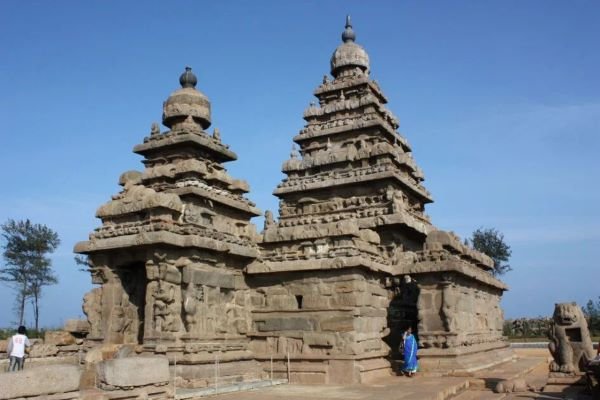
The main entrances are indeed massive structures depicting the class of craftsmanship. The gigantic heights of the Gopura have beautiful carvings and idols of the Gods and Goddesses. There are mythical segments to decorate the walls of the entrances called Gopura.
The Brihadeeswara Temple in Thanjavur is a prime example of Dravidian architecture, showcasing its massive gopuram and vast courtyards.
Vesara Style:
The Vesara style, emerging as a blend of Nagara and Dravidian elements, offers fascinating architectural features. This hybrid style is often seen in the Deccan region, where the Chalukya and Hoysala temples exhibit Vesara characteristics.
The Vesara style incorporates the verticality of the Nagara shikhara with the horizontal expansiveness of the Dravidian layout, resulting in a harmonious architectural type.
In essence, the diversity within Hindu temple architecture is a reflection of India’s regional adaptations. Further, its artistic expressions provide a rich depiction of spiritual and cultural reverence.
Symbolism in Hindu Temples:
Hindu temples are not merely places of worship. They are rich with symbolism that conveys deep spiritual and philosophical meanings. The architecture and decoration of these temples are meticulously designed. Hence, various aspects of Hindu cosmology, mythology, and theology make the temple a microcosm of the universe.
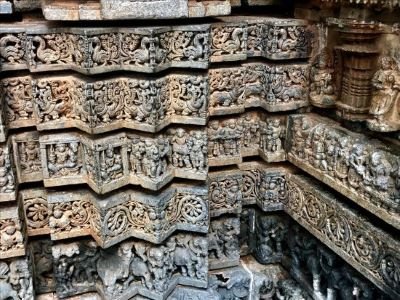
The placement and depiction of deities, mythological scenes, and symbolic motifs within the temple complex are deliberate and purposeful. Its purpose is to guide devotees on a spiritual journey that leads to non-dualism.
The deities enshrined in Hindu temples are central to their religious belief. Each deity, whether Lord Shiva, Vishnu, Durga, or another, is portrayed with specific attributes. The particular postures convey their essential qualities and powers. For instance,
Shiva’s representation with the Trident or Trishula symbolizes his role as the destroyer of ignorance and evil. Vishnu’s depiction with the Conch or Shankha and the Discus or Chakra highlights his role as the preserver and protector of the universe.
The places of these deities in the temple often follow strict guidelines, with the sanctum sanctorum or Garbhagriha housing the principal deity, symbolizing the heart of the cosmos. Some scenes from the holy scriptures Ramayana and Mahabharata are depicted on walls and pillars.

Carvings and motifs:
These intricate carvings adorn the temple walls and serve as moralistic tools imparting moral and ethical lessons to devotees. They create a narrative space that connects the devotee with the divine. Thus, making the myths come alive through art and architecture.
Symbolic motifs such as the lotus, the wheel, and the trident are recurrent themes in Hindu temple art. The lotus, often seen at the base of deity sculptures or temple ponds, signifies purity and spiritual enlightenment. The wheel (chakra), another prime motif, symbolizes the cyclical nature of time and the eternal law (dharma).
Together, these elements create a rich environment of symbolism that enhances the spiritual experience of temple worship. Deliberately it transforms the temple space into a sacred cosmos. That reflects the profound depths of Hindu spirituality and philosophy.
Brihadeeswara Temple:
The Brihadeeswara Temple, also known as Peruvudaiyar Kovil, is a monumental representation of Chola Architecture. Located in Thanjavur, Tamil Nadu state of India, it was constructed between 1003 to1010 AD during the reign of Rajaraja Chola I. The temple is dedicated to Lord Shiva and is famed for its grand vimana (temple tower), which rises to an impressive height of 66 meters.
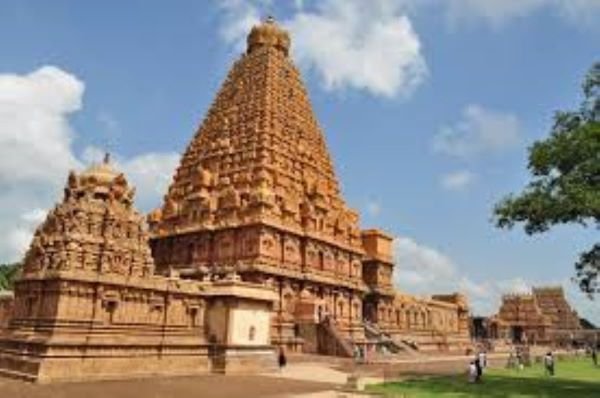
The entire structure is of granite, and its walls are adorned with intricate carvings. Also, the frescoes depict various mythological scenes and deities. The Brihadeeswara Temple is a marvel of South Indian architecture. The temple truly symbolizes the zenith of Chola’s power and artistic achievement.
Khajuraho Temples:
The Khajuraho Group of Monuments, situated in Madhya Pradesh, is a UNESCO World Heritage site. It is known worldwide for its stunningly sculpted beautiful temples. Built between 950 and 1050 AD by the Chandela dynasty, these temples are renowned for their intricate carvings and erotic sculptures. The Western Group of Temples, including the Kandariya Mahadeva Temple, is the most famous among the 22 surviving temples.
These temples reflect a unique blend of Hindu and Jain architectural styles. It is primarily characterized by its elevated platforms, ornate spires, and detailed friezes. The Khajuraho Temples are exceptional examples of religious and artistic expression, capturing the ethos of medieval Indian society.
Meenakshi Temple:
The Meenakshi Amman Temple, located in the ancient city of Madurai, Tamil Nadu, is a masterpiece of Dravidian architecture. This sprawling temple complex is dedicated to Goddess Meenakshi and her consort, Lord Sundareswarar. The temple’s history dates back to the early Common Era, but it reached its architectural zenith during the reign of the Nayak dynasty in the 16th century.
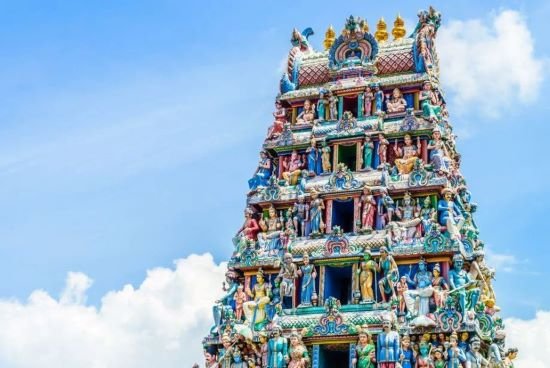
The most exciting features of the Meenakshi Temple are its towering gopurams (gateway towers). These are adorned with thousands of colorful sculptures. These artworks depict various gods, goddesses, and mythical creatures. The temple’s sacred tank, the Golden Lotus Tank, and the Hall of Thousand Pillars add to its architectural grandeur.
Jagannath Temple:
The Jagannath Temple in Puri, Odisha, is one of the most significant pilgrimage sites in Hinduism. King Anantavarman Chodaganga Deva constructed this temple in the 12th century. It’s a temple of God Jagannath. Jagannath is revered as a form of Lord Krishna.
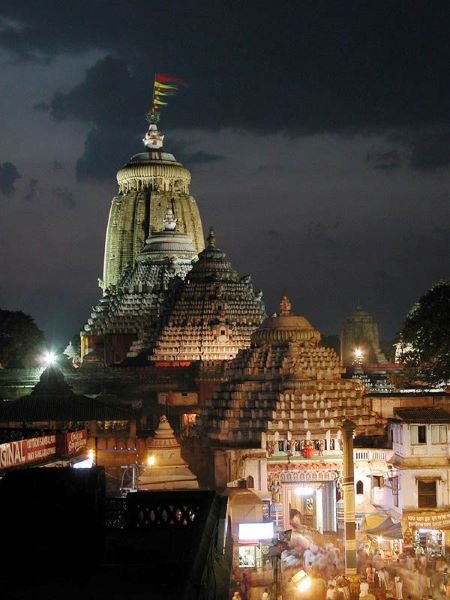
It is renowned for its monumental spire as high as 65 meters. The intricate carvings showcase the region’s unique Kalinga architectural style. The annual Rath Yatra (Chariot Festival), where the deities are taken out in a grand procession, attracts millions of devotees from across the globe.
The Jagannath Temple holds immense religious significance. It truly represents the flavor of medieval Odisha’s architectural and cultural achievements.
Modern Interpretations and Conservation Efforts:
Recently, the preservation and interpretation of Hindu temple architecture have become focal points. The intricate artistry and historical significance of these structures necessitate careful restoration projects. The aim is to maintain their original splendor while ensuring their longevity.
Brihadeeswara Temple:
Brihadeeswara Temple in Tamil Nadu is a vivid example of the rebuilding of the shrine. Conservationists have utilized modern techniques to repair and preserve its elaborate carvings and towering vimana.
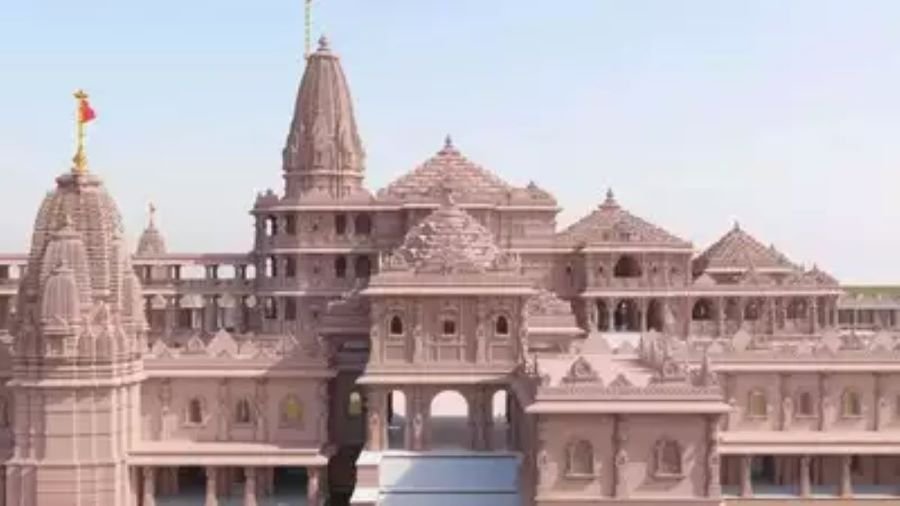
Advanced techniques:
The use of modern technology has revolutionized the conservation efforts of Hindu temples. Advanced imaging techniques, such as 3D laser scanning, allow for precise documentation of architectural details, enabling accurate restoration work.
Additionally, these technologies facilitate the creation of digital archives, preserving the temple’s design for future generations. For instance, the digital reconstruction of the Hampi temple complex in Karnataka has provided invaluable insights into its original layout and design, helping in its restoration and conservation.
Contemporary designs:
Contemporary designs of Hindu temples also draw inspiration from traditional elements. So, it is blending the old with the new. Modern architects often incorporate classical motifs, such as the gopuram (gateway tower) and mandapa (pillared hall), into their designs.
Thus, creating structures that look like their historical counterparts. There is no better paradigm than the Akshardham Temple, Delhi, which reflects the grandeur of traditional designs. The temple was completed in 2005 AD.
It has merged traditional architectural styles with modern building materials and techniques. The resultant magnificent edifice resonates with cultural heritage.

Furthermore, modern temples extend beyond mere aesthetics. Sustainable practices are increasingly being integrated into temple design. The restoration works also ensure that these sacred spaces are environmentally safe.
The locally sourced materials, energy-efficient lighting, and rainwater harvesting systems are in demand. It firmly preserves the architectural values of the temples and aligns with the eco-conscious values of contemporary society.
Conclusion: The Legacy of Hindu Temple Architecture:
The ongoing legacy of Hindu temple architecture is an impression of its profound culture and spirit. These architectural marvels, characterized by their intricate designs, symbolic elements, and sacred geometries inspire individuals across the globe.
Hindu temples are not merely structures of worship but venerable cultural heritage. Additionally, it is a school of centuries of artistic evolution, religious devotion, and community life.
The preservation of these architectural wonders is crucial for future generations. Efforts to restore and maintain ancient temples and construction of new ones are essential in keeping this legacy alive. Through education, tourism, and cultural exchange, a broader audience can appreciate the richness and complexity of Hindu temple architecture.
In essence, Hindu temple architecture is more than a historical relic. The tradition continues to shape and define the cultural and spiritual landscape. Its enduring legacy is a reminder of the timeless beauty and profound wisdom embedded in these sacred spaces.

